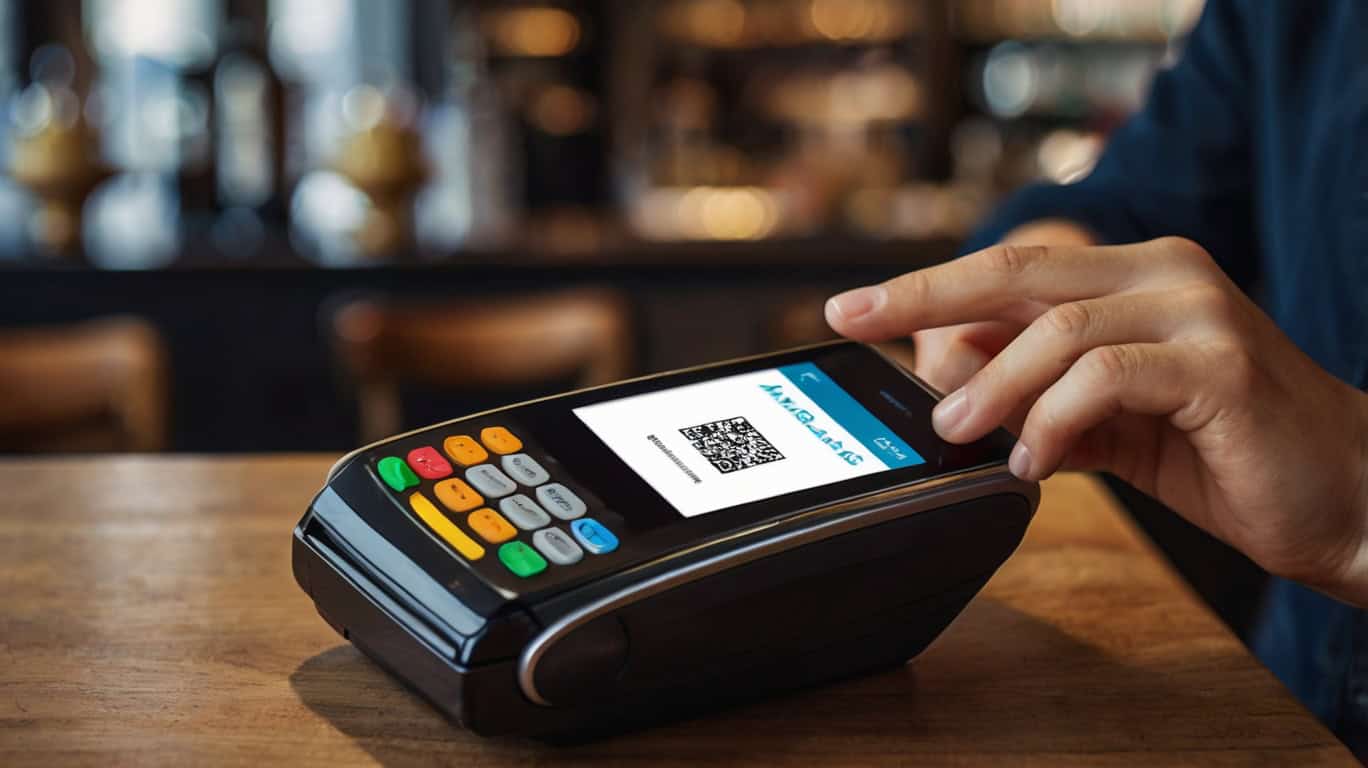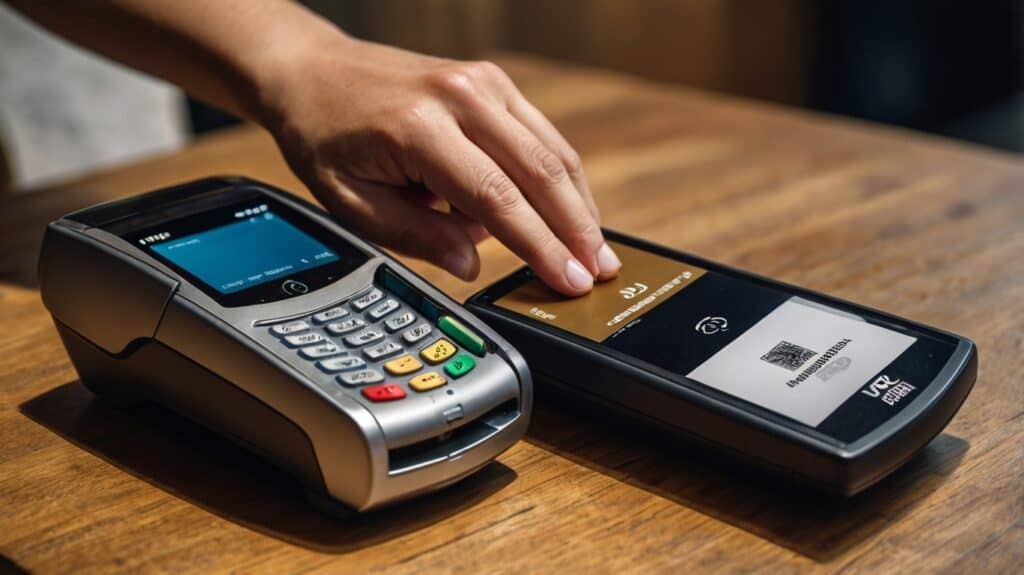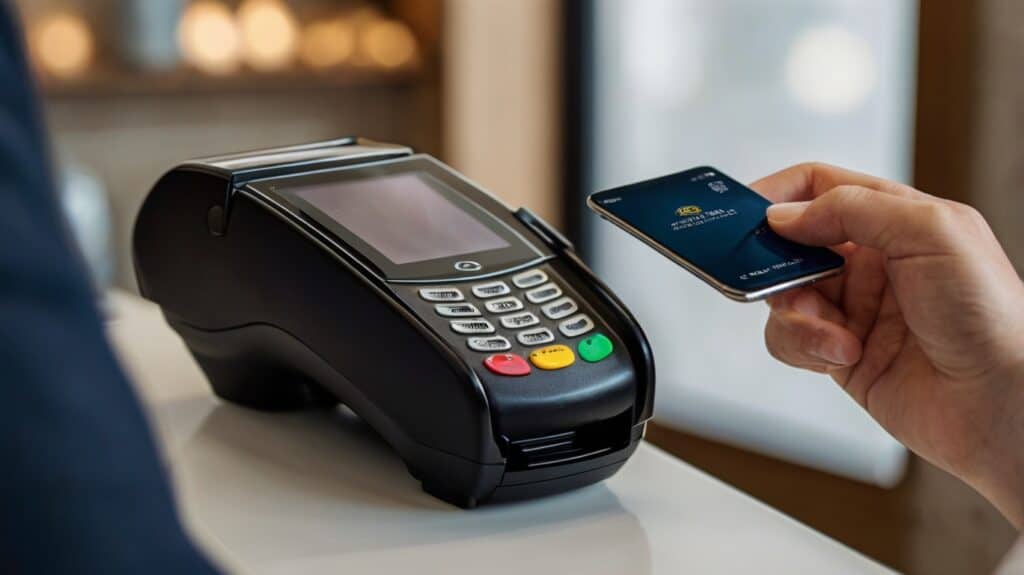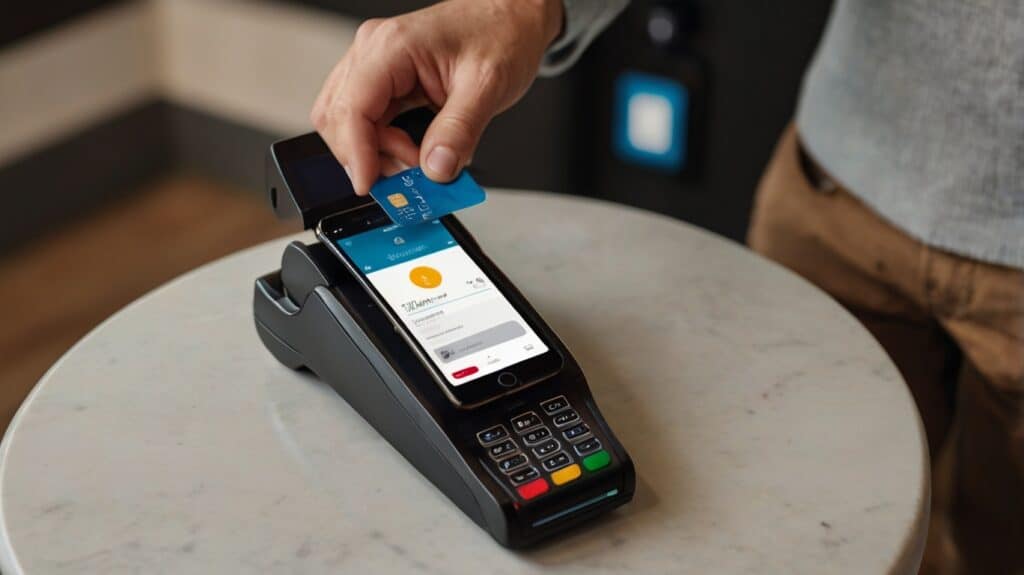
By alphacardprocess July 24, 2025
Imagine this: a customer enters a store, grabs an item and, with a swift tap of their phone, leaves the store. No queues. No cash. No hassle. Now is the time when contactless POS (point of sale) systems are becoming the future.
The way we pay has shifted fundamentally in its wake. Speed along with safety and hygiene are the new consumer priorities. Consumers value fast, frictionless checkout, and fumbling for a card or cash is quickly becoming antiquated.
This transformation provides opportunities and poses challenges to small businesses. Embracing Contactless Payments isn’t just about keeping up with technology — it’s about staying relevant in a market where convenience rules. From quick transactions and satisfied customers to higher sales, going contactless is no longer a matter of choice. It is crucial for survival and success in today’s fast-paced retail environment. It is time to discuss with your payment processors and upgrade the system if you haven’t upgraded yet and here is why.
What Are Contactless Payments?
Contactless payments are a quick, easy and secure way to pay for goods using tap-enabled cards, mobile payment solutions and digital wallets that you can access on your Apple Pay and Google Pay and even your smartwatch! With no card to insert or cash to handle, customers just tap their device or card near a payment terminal — and the transaction is done.

Under the covers, the technology that makes it work is coined NFC (Near Field Communication). It allows devices to communicate securely over short distances — a kind of digital handshake that occurs in a fraction of a second.
It feels super seamless for customers. No PINs to remember, no swiping, no waiting. Just tap and go. It’s not only faster than traditional ways of looking at the sea bottom, but also more hygienic — an issue that proved critical during and after the pandemic.
From buying a coffee to a quick grocery shop, contactless payments has made everyday payments easy, safe and fast.
The Rise of Contactless: A Trend Turned Standard
Contactless payments didn’t appear overnight. Even before the pandemic, they were quietly gaining favor, especially in places like busy urban places where speed and convenience were paramount.
And then the pandemic arrived, and everything changed. Focus had shifted to health and hygiene, with no one wishing to touch shared surfaces or handle cash. The demand for speedy, touch-free payments drove the surge in contactless. And what was once a convenient option turned into the de facto way to pay.
Currently, it’s not only a fad — it’s the norm. Customers expect it. In fact, many customers now steer clear of stores that don’t offer the tap-and-go or contactless payment option. Cash is clumsy, chip-and-PIN is slow, and the idea of queuing to pay seems very inconvenient.
Why Small Businesses Should Be Adopting Contactless Payments?
Making contactless payments is not just about being up to date with technology—it’s about creating a smoother, more smarter journey for both your customers and your business. Here are four reasons why it is now more important than ever:
Happy Customer = More Sales
With easy payment, they’ll spend more. A slow card reader or long line can make a sale seem like an afterthought. But with a quick tap, there’s no wait or customers living the store. After all, impulse buys are more prevalent when checkout is immediate.
Less Time At The Checkout = Better Service
Nobody likes standing in line, especially during peak hours. Contactless payments are faster, reducing bottlenecks and enabling staff members to serve more people with less friction.
That faster flow means your team can focus on quality service, not scrambling at the till. Fewer queues. Happier customers. Smoother shifts.

Safer Than Cash or Cards
Despite all the myths, contactless is incredibly secure. It leverages encryption, tokenization and often requires biometric authentication — making it more secure than old-fashioned magnetic stripe cards or even old money.
Less risk of card skimming or loss without any physical contact. For businesses it also means fewer disputes, fewer chargebacks and less anxiety.
Builds Trust and a Modern Brand Image
Providing alternate, modern payment methods means that your business is both up-to-date and has the needs of customers in mind. It communicates that you value people time, safety, and preferences.
This is especially true for younger shoppers and international visitors—they’re not just expecting contactless, they assume it’s available. Not offering it could send the wrong message and cost you credibility in a competitive market.
Data & Insights
One of the less understood strengths of digital payments is the data. You can keep up with when customers buy, what they like and how many times they come back.

This kind of intelligence is gold for small businesses. It helps you plan smarter marketing, manage stock more efficiently and focus what you offer on what people really will buy.
Here’s how to set up contactless payments. Start Here: Do You Need to Enable Contactless Payments?
Getting Started: How to Set Up Contactless Payments
Ready to make the switch to contactless payment? It’s actually easier than you would think to get set up. Here’s a basic how-to to get small businesses started:
Step 1: Selecting the Best Payment Gateway for Your Store
Begin by choosing a vendor that meets your business requirements. Find one that offers reliability, reasonable transaction fees, good customer support and is compatible with your setup. Don’t simply gravitate toward the cheapest — consider the quality of service and usability.
Step 2: Choose the Device
As a small business, you can choose from a range of products, from a mobile card reader to a phone-based terminal to a fully integrated POS system — it all depends on your budget and the size of your business. Mobile options are convenient for pop-ups and coffee shops, and integrated systems are suited for retail or busy restaurants.
Step 3: Integration
Be sure your payment system is compatible with the other tools you already use like inventory tracking, accounting software, customer databases. Offering paperless receipts via SMS or email is also a plus, saving time and reducing clutter.
Step 4: Train Your Staff
Make sure your staff knows how to use the entire system. Train them on troubleshooting, describe the benefits of contactless technology and gently guide any hesitant customers through the process.
Step 5: Let Customers Know
Visibility is key. Have clear signage at the till with the following message: “Tap to Pay Available Here.” And don’t forget to spread the word online—social media is a great way to attract digitally-minded customers looking for quick, modern service.
The Future of Payments: What’s Next?
As technology progresses, so do the ways that we pay. Biometric payments — facial recognition or fingerprints — have been deployed already in some areas as a frictionless, secure way to authenticate payments without even bringing the device out.

Wearable tech is also gaining ground. Smartwatches, rings, and even fitness bands have become, well, smart payment devices that can complete a tap-and-go transaction like any other. Voice-activated payments, meanwhile, are starting to come to the fore, letting customers buy products with a few spoken words.
And most high-tech of all, there is the idea of invisible payments — as in the stores where you just walk out and get charged automatically, no checkout necessary.
For small businesses, chasing these innovations isn’t about becoming the first owner of every new gadget that hits the market. It’s really just about staying flexible and open to change. The future of payments will be fast, intuitive, and customer-centric — and the fastest way to take advantage of that is to be ready for it.
Conclusion
Contactless payments are no longer a nice-to-have—they’re a must. They speed up service, reduce friction at checkout, and meet the expectations of today’s tech-savvy customers. For small businesses, adopting this technology isn’t just about staying current—it’s about staying competitive.
By making it easier for people to pay, you’re also making it easier for them to return. And in a world where loyalty is earned in seconds, that’s a powerful edge. The future of payments is fast, smart, and customer-first. Are you ready to tap in?
Frequently Asked Questions
1. Do I need expensive equipment to accept contactless payments?
Not at all. Many providers offer affordable mobile card readers or phone-based systems. It’s more accessible than ever for small businesses.
2. Are contactless payments safe?
Yes—contactless uses secure encryption and often biometric authentication. It’s actually safer than magnetic stripe cards or handling cash.
3. What types of payments count as contactless?
Anything you can tap—like debit/credit cards, smartphones with Apple Pay or Google Pay, and smartwatches.
4. Can contactless payments work for service-based businesses too?
Absolutely. Whether you’re a salon, a food truck, or a personal trainer, mobile terminals make on-the-go payments easy.
5. How do I let customers know I accept contactless?
Use clear signage at your checkout counter and update your website and social media to show you’re tap-to-pay friendly.